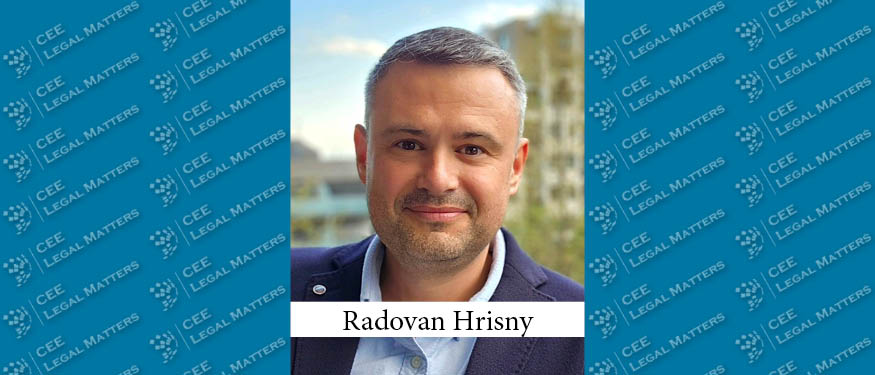The Regulation (EU) 2024/1991[1], known as the "Nature Restoration Law" ("NRL"), represents a significant EU initiative aimed at reversing ecosystem degradation. The NRL requires Member States to restore degraded ecosystems and enhance biodiversity and resilience across land and marine areas. Effective from 18 August 2024, the NRL imposes binding targets for ecosystem restoration, presenting both opportunities and challenges. This article analyses the NRL's potential impacts on the private sector, highlighting significant concerns and legal issues.
Nature Restoration Law
The NRL defines "restoration" as the process of assisting the recovery of degraded, damaged or destroyed ecosystems to restore their natural functions, services and biodiversity. This involves actions that aim to bring ecosystems back to a healthy state. Restoration under the NRL includes reforestation, wetland rehabilitation and the re-establishment of natural habitats, with the goal of reversing the decline in biodiversity and mitigating climate change impacts.
To achieve the EU's ambitious objectives, the NRL establishes binding restoration targets and obligations for various ecosystems. By 2030, the restoration measures should cover at least 20 % of the EU's land and sea areas, including terrestrial, coastal and freshwater, forest, agricultural and urban areas. By 2050, the measures should extend to all ecosystems "requiring restoration".
To reach these targets, the NRL contains more specific requirements, such as:
- the restoration of at least 30 % of ecosystems covered by the NRL from a poor to a good condition by 2030, increasing to 60 % by 2040 and 90 % by 2050. Until 2030, priority should be given to Natura 2000 sites;
- the restoration of agricultural ecosystems with a focus on two of the following indicators: butterfly and farmland bird populations, soil organic carbon or high-diversity landscape features;
- the restoration of the natural connectivity of rivers and natural functions of the related floodplains, obliging Member States to remove artificial barriers to the connectivity of surface waters, such as "obsolete" barriers that are no longer needed for renewable energy production, inland navigation, water supply or flood protection;
- the prevention of net loss in the total national area of urban green space and of urban tree canopy cover in urban ecosystem areas.
Member States must adopt "restoration plans" detailing how they intend to achieve these targets and ensure that the restored areas do not significantly deteriorate. In preparing the national restoration plans, Member States shall involve several stakeholders, such as local and regional authorities, landowners, civil society organisations, farmers, fishers, foresters, investors and the general public, at all stages of development, review and implementation.
When drawing up their national restoration plans, Member States may use the various examples of restoration measures listed in Annex VII of the NRL, such as renaturalising riverbeds by removing artificial bed fixation, halting or reducing the use of chemical pesticides or increasing urban green spaces.
NRL's impact on the private sector and its challenges
The NRL is controversial, as it raises concerns about how it will be put into practice and its effects on the economy and land use.
- Terminology issues: What is noticeable at first is that the NRL is plagued by unclear terminology. For example, the term "restoration" is defined, but "restoration measures" are not. Instead, there is a non-exhaustive list of examples in the Annex. However, as the examples are kept very general, it is not possible to predict whether the recovery objectives can be achieved at all or whether much more serious interventions will be necessary.
For example, achieving the NRL target of improving or restoring 20 % of land and marine areas in smaller, landlocked countries like Austria seems unfeasible. This goal would likely require permanently removing areas from agricultural and operational use. The renaturation measures for restoring riverbeds and lakes, which involve removing bed fixations and structures that span across rivers, could even lead to the deconstruction of urban areas.
- Conflicts with economic activities: This creates a potential conflict between restoration efforts and economic activities. For example, restoration measures may require the use of land that is currently being used for agriculture or other forms of development. This could lead to tensions between environmental goals and the interests of landowners, farmers, industry and local communities.
Areas that are subject to restoration measures must achieve good status and good status must not deteriorate significantly. It remains unclear whether Member States will be able to approve new projects that might cause any deterioration. In our opinion it would be highly problematic if those new projects were automatically deemed inadmissible.
An exception to this prohibition of deterioration only exists in certain cases, e.g. caused by force majeure or by plans and programmes of overriding public interest where no less damaging alternative solutions are available, which is determined on a case-by-case basis.
- Challenges related to renewable energy projects: In this context, however, the EU legislator recognises (only) the importance of renewable energy projects and considers them to be of overriding public interest. Moreover, the NRL enables the Member States to exempt renewable energy projects from the requirement of less damaging alternative solutions if they have been subject to a Strategic Environmental Assessment (SEA) or an Environmental Impact Assessment (EIA).
Despite the attention paid to renewable energy projects, the NRL may still hinder the achievement of renewable energy targets by creating bottlenecks to developing new projects. For instance, PV plants, while classified as renewable energy projects, are not subject to an EIA. If no SEA was carried out either (and this is not necessarily required), the exemption rule would not be applicable. These ambiguities mean that a simplification of the approval procedures – at least from an Austrian perspective – is not yet in sight. It is also worth questioning whether renewable energy projects are truly necessary if no new or modified projects are allowed under the NRL.
- Implementation issues: It will also be interesting to see how federalist Member States like Austria, where legislative authority for nature conservation generally lies with the provinces, will approach restoration plans and measures. Inconsistencies and varying priorities in their implementation can be expected across the EU.
Lastly, the NRL mentions the possibility of access to information, public participation in decision-making and access to justice in environmental matters in a recital, referring to the Aarhus Convention and the Treaty on European Union. Member States must ensure that their restoration plans are subject to public and judicial review with the possibility to contest. The choice of legal framework for restoration plans could, however, clash with the intended access to public and judicial review, as the possibilities for challenging laws, ordinances and permits vary between Member States and are often restricted.
Conclusion
In conclusion, the impact of the NRL largely depends on how Member States implement it. Although the NRL is directly applicable across the EU, a directive might have offered a more flexible approach. The use of ambiguous terminology may either push for ambitious goals or necessitate future adjustments. The challenges highlighted could hinder economic growth, delay renewable energy projects and create inconsistencies in NRL implementation across Member States.
Member States have until 1 September 2026 to draft their restoration plans. It is crucial for the private sector to engage in this process, stay informed and prepare for the forthcoming changes.
[1] Regulation (EU) 2024/1991 of the European Parliament and of the Council of 24 June 2024 on nature restoration and amending Regulation (EU) 2022/869.
By Sarah Wolf, Attorney at Law, and Isabel Bruckmoser, Associate, Schoenherr














